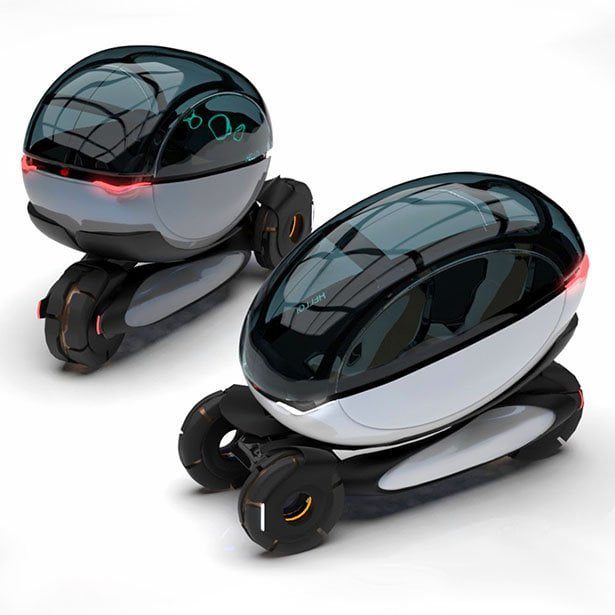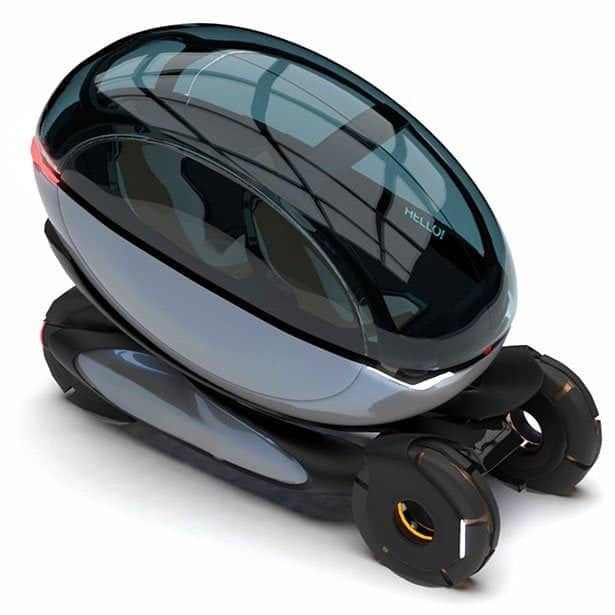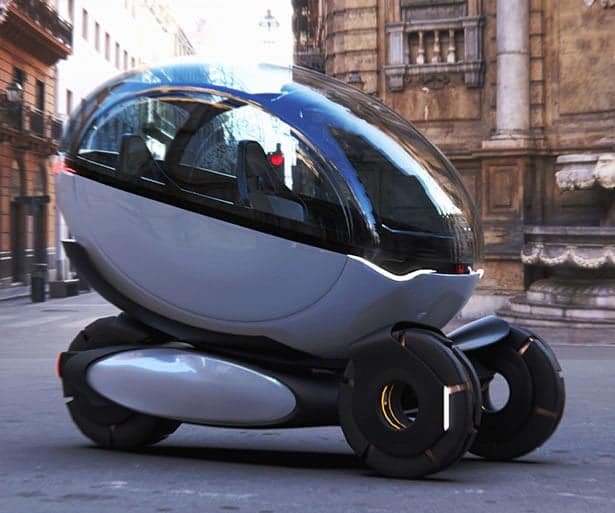Shell 2030 is a futuristic vision of transportation conceived by the talent of Tamir Mizrahi.
It may seem like a frontier concept compared to others. After all, we are already on the eve of a massive arrival of vehicles for individual transport. In Italy Citroen Ami and Xev will join Twizy and dozens of other solutions. So why go further? Shell 2030 explores the features and solutions of the future city car.
Through extensive research, Tamir Mizrahi believes it is possible to mass-produce this vehicle with infrastructure and technologies that will be available, the vehicle's name says, in 2030. Shell 2030 is a future all-electric city car that leaves no footprint on the planet. the compact body takes up only a small space on the street. Mizrahi (like so many in recent months) wants to combine the advantages of a car and a bicycle in one vehicle.

Shell 2030, the future for two
Being an autonomous three-wheeled vehicle, Shell is able to accommodate up to two people at a time. It is an urban transport that can move around the city with ease, it also has a clever way of maneuvering thanks to a triangular V-shaped axis.
Tamir Mizrahi says his goal for this project is to provide people with a new type of personal transportation where they can ride a small vehicle to get around the city, almost like a motorcycle. Shell 2030 features a clear glass dome that offers a 360-degree panoramic view. Since this is an autonomous vehicle (I hadn't mentioned this not insignificant detail), those wheels are controlled by small computers that can be operated from the grips above them. It has a large group of sensors to inform the driver about the type of road, the suggested driving style, the battery level and other parameters of both the vehicle and the external environment.

The details are a bit lacking, but it is comforting to already see a convergence on the design of these city cars: this seems to be the trend. On the one hand, vehicles that were once "family" will become real "places on wheels". Surprisingly, thanks to the elimination of a large part of the internal instrumentation, even vehicles of today's small dimensions will be useful for this purpose (today's small car will be tomorrow's small family car). For the last mile and city cars, however, there will be room for small and practical vehicles that will transfer the philosophy of a smartphone also to individual and proximity transport.


